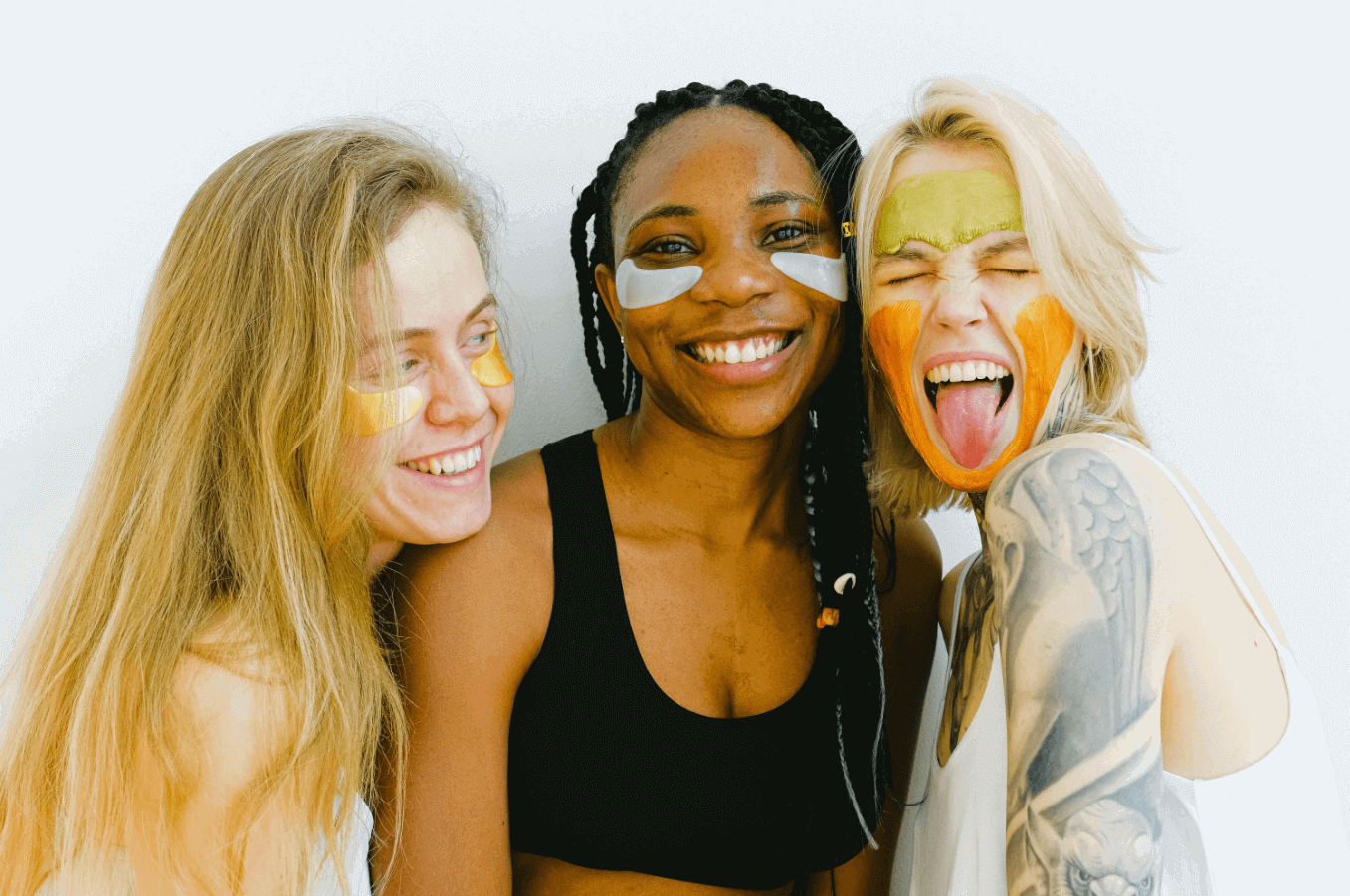Picture this: you're scrolling through your feed at 2am (we've all been there 😅), and suddenly you're deep in a rabbit hole about ancient Egyptian beauty rituals. Turns out, Cleopatra wasn't just serving looks - she was basically the OG skincare influencer, and her beauty secrets are still making waves in our modern routines. Wild, right?
I used to think skincare history was just boring museum stuff, but tbh, learning about this journey from ancient oils to today's AHA peels completely changed how I look at my bathroom cabinet. It's like discovering your favorite indie band actually has decades of incredible music you never knew about.
The thing is, skincare isn't just about looking good (though that's definitely a perk). When you feel confident in your skin, it affects everything - including your intimate confidence and how you show up in relationships. And honestly? Understanding where our favorite products came from makes using them feel so much more intentional.
The Ancient Beauty Blueprint
Let's start at the very beginning - because apparently, humans have been obsessed with glowing skin for literally thousands of years. Ancient civilizations weren't messing around when it came to beauty routines.
The Egyptians were absolute pioneers in this space. They used oils like jojoba, argan, and rosehip - ingredients that are still considered holy grail products today. Cleopatra's famous milk baths? Those contained lactic acid, which is basically a gentle AHA that we still use in modern chemical peels. She was doing chemical exfoliation before chemistry was even a thing!
But here's what really gets me - ancient beauty wasn't just about vanity. In many cultures, taking care of your skin was deeply connected to overall wellness, including sexual health and fertility. Greek women used olive oil not just for cooking, but as a full-body moisturizer that was believed to enhance their natural allure.
The Romans took things even further with their elaborate bathhouse culture. These weren't just places to get clean - they were social hubs where people would spend hours on skincare rituals, body treatments, and what we'd now call self-care practices.
Medieval Beauty Secrets (The Dark Ages Weren't So Dark)
Okay, so the medieval period gets a bad rap beauty-wise, but people were still innovating. They just had to get creative with what was available.
European women used rosewater as a toner (still a favorite today), and honey as a natural humectant and antibacterial treatment. Fun fact: honey is still used in modern skincare for its healing properties, especially for sensitive areas of the body.
Asian cultures were way ahead of the game during this time. Japanese women were using rice water to cleanse and brighten their skin - a practice that's having a major moment on social media right now. Korean beauty traditions from this era laid the groundwork for what we now know as the famous K-beauty routine.
What I find fascinating is how these medieval beauty practices were often tied to ideas about health and vitality. Clear, glowing skin wasn't just aesthetic - it was seen as a sign of overall wellness and, yes, sexual health too.
The Renaissance Glow-Up
The Renaissance wasn't just about art and literature - it was a total beauty revolution. This is when we start seeing the first real "cosmetics" as we'd recognize them today.
Italian women were mixing their own face masks using ingredients like egg whites, honey, and various oils. They understood that healthy skin required both cleansing and nourishing - a concept that seems obvious now but was pretty revolutionary then.
French court culture took skincare to new heights of luxury. They were using distilled flower waters, delicate oils, and even early versions of what we'd now call serums. Marie Antoinette was famous for her elaborate beauty routines that included everything from rose petal baths to custom-blended facial treatments.
This period also saw the beginning of skincare being marketed specifically to enhance one's attractiveness and romantic appeal. Beauty became more openly connected to sensuality and intimate confidence.
The Industrial Revolution Changes Everything
Here's where things get really interesting. The Industrial Revolution didn't just change manufacturing - it completely transformed how we approach skincare.
Suddenly, ingredients could be mass-produced and standardized. The first commercial cold creams and cleansers hit the market, making skincare more accessible to regular people, not just the wealthy elite.
This era saw the birth of brands that are still household names today. Companies started investing in research to understand how skin actually works, rather than just relying on traditional knowledge passed down through generations.
But here's the thing - with mass production came a bit of a disconnect from the holistic approach to beauty that ancient cultures had. Skincare became more about fixing problems rather than preventing them or supporting overall wellness.
The Science Revolution: Enter Chemical Peels
Fast forward to the 20th century, and suddenly we're in full-on science mode. This is when skincare went from folk remedies to laboratory-tested formulations.
The discovery and development of alpha hydroxy acids (AHAs) was honestly a game-changer. Dermatologists figured out how to harness the same lactic acid that Cleopatra was using in her milk baths, but in controlled, predictable concentrations.
Chemical peels became the new frontier. What used to take weeks of gentle daily treatments could now be achieved in a single session. AHA peels, BHA peels, and eventually more advanced treatments like TCA peels gave people options for addressing everything from acne to aging.
I remember when AHA products first became available over-the-counter - it felt like having access to professional-level treatments at home. The ability to actually see results, rather than just hoping traditional remedies would work, was revolutionary.
Modern Skincare: The Best of Both Worlds
Here's where we are today, and honestly, it's pretty amazing. We've managed to combine the wisdom of ancient practices with cutting-edge science, and the results speak for themselves.
Modern formulations often include traditional ingredients like honey, rose water, and various plant oils, but they're combined with scientifically-proven actives like retinoids, peptides, and advanced forms of AHAs and BHAs.
The K-beauty revolution brought back the idea of skincare as self-care ritual, emphasizing gentle, consistent care over harsh treatments. Meanwhile, medical aesthetics has given us access to professional-grade treatments that our ancestors could never have imagined.
What I love most about modern skincare is how it's become more inclusive and personalized. We understand now that different skin types and concerns require different approaches, and there's no one-size-fits-all solution.
The Intimate Connection: Skincare and Sexual Wellness
Let's talk about something that doesn't get discussed enough - the connection between skincare confidence and intimate wellness. When you feel good in your skin, it affects every aspect of your life, including your relationships and sexual confidence.
Throughout history, beauty rituals have been tied to sensuality and attraction. But it goes deeper than that. Taking care of your skin is an act of self-love that builds confidence from the inside out.
Modern research shows that people who have consistent skincare routines report higher levels of self-confidence and satisfaction in intimate relationships. It's not about looking perfect - it's about feeling comfortable and confident in your own skin.
The ritual aspect matters too. Those few minutes you spend on your skincare routine? That's mindfulness practice. It's time to connect with yourself, check in with how you're feeling, and show yourself some love.
Frequently Asked Questions
What were the most effective ancient skincare ingredients that we still use today?
Honey, rose water, various plant oils (like jojoba and argan), and lactic acid from milk are probably the biggest winners. These ingredients have stood the test of time because they actually work - they provide hydration, gentle exfoliation, and antimicrobial benefits that our skin loves.
How do modern AHA peels compare to ancient exfoliation methods?
Ancient methods were gentler and took longer to show results, but they were also less likely to cause irritation. Modern AHA peels are more concentrated and give faster results, but they require more careful use. Both approaches have their place - it really depends on your skin type and goals.
Are natural skincare ingredients always better than synthetic ones?
Not necessarily! Natural doesn't automatically mean better or safer. Some synthetic ingredients are actually gentler and more effective than their natural counterparts. The key is finding ingredients that work for your specific skin needs, regardless of whether they're natural or lab-created.
How has the approach to skincare and beauty changed regarding intimate confidence?
There's been a huge shift toward understanding skincare as self-care rather than just vanity. Modern approaches emphasize feeling confident and comfortable in your own skin, which naturally translates to greater intimate confidence. It's less about conforming to beauty standards and more about personal wellness.
What can we learn from ancient skincare practices for our modern routines?
The biggest lesson is probably patience and consistency. Ancient beauty routines were about long-term skin health rather than quick fixes. They also understood the connection between overall wellness and skin health - something we're rediscovering with the rise of holistic skincare approaches.
Wrapping Up This Beauty Journey
Ngl, diving into skincare history has made me appreciate my routine so much more. Every time I use an AHA toner, I think about Cleopatra and her lactic acid baths. When I'm massaging in a face oil, I'm connecting with thousands of years of people who understood that taking care of your skin is taking care of yourself.
The evolution from ancient oils to modern AHA peels isn't just about better products - it's about understanding that skincare is deeply personal and incredibly powerful. Whether you're team ancient wisdom or team modern science (or like me, team both), the goal is the same: feeling confident and comfortable in your own skin.
Your skincare journey is uniquely yours, but you're part of this incredible historical tradition of people who understood that glowing skin isn't just about looking good - it's about feeling good, inside and out. And honestly? That's pretty beautiful 💫




